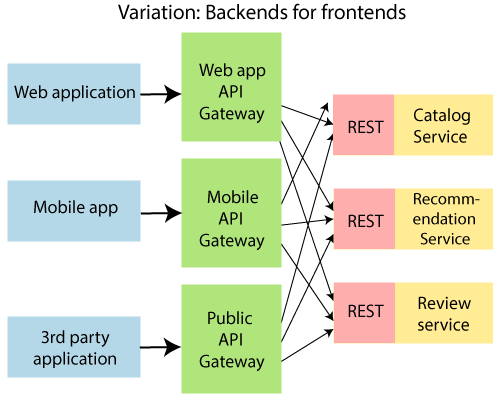Introduction to API GatewaysWhat is an API Gateway?An API stands for Application Program Interface. It is a set of instructions, protocols, and tools for building software applications. It specifies how software components should interact. The API Gateway is a server. It is a single entry point into a system. API Gateway encapsulates the internal system architecture. It provides an API that is tailored to each client. It also has other responsibilities such as authentication, monitoring, load balancing, caching, request shaping and management, and static response handling. API Gateway is also responsible for request routing, composition, and protocol translation. All the requests made by the client go through the API Gateway. After that, the API Gateway routes requests to the appropriate microservice. The API Gateway handles the request in one of the two ways:
The API Gateway can provide each client with a custom API. It also translates between two protocols, such as HTTP, WebSockets, and Web-Unfriendly protocols that are used internally. Example The popular example of API Gateway is Netflix API Gateway. The Netflix streaming services are available on hundreds of different kinds of devices such as televisions, set-top boxes, smartphones, tablets, etc. It attempts to provide a one-size-fits-all API for its streaming service. 
An API Gateway includes:
Advantages of API Gateway
Disadvantages
Working of API GatewayIn microservices, we route all the requests through an API. We can implement common features like authentication, routing, rate limiting, auditing, and logging in the API Gateway. Consider a scenario in which we do not want to call a microservice more than five times by a particular client. We can do it as a part of the limit in the API Gateway. We can implement the common features across microservices in the API gateway. The Zuul API Gateway is a popular API Gateway implementation. We must implement the following features in all the microservices:
Suppose there is an external consumer who wants to call fifteen different services as part of one process. It is better to aggregate those fifteen services and provide one service call for the external consumer. These are the kinds of features that are common across all the microservices. These features are implemented at the level of API. Instead of allowing microservices to call each other directly, we would do all the calls through API Gateway. API Gateway will take care of common features like authentication, fault tolerance, etc. It also provides aggregation services around all microservices because all calls get routed through the API Gateway.
Next TopicZuul API Gateway
|
 For Videos Join Our Youtube Channel: Join Now
For Videos Join Our Youtube Channel: Join Now
Feedback
- Send your Feedback to [email protected]
Help Others, Please Share










